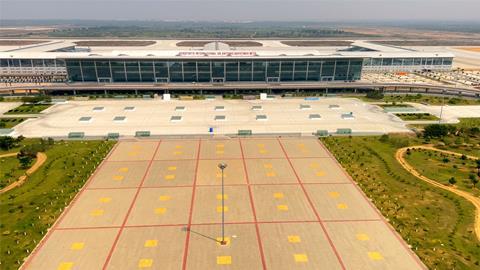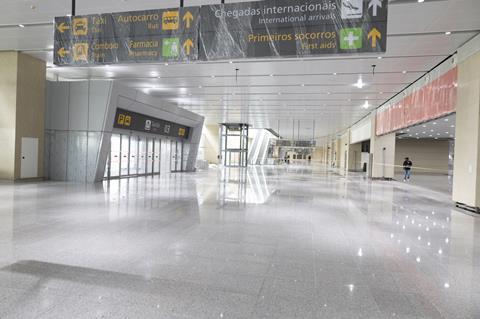António Agostinho Neto International Airport (AIAAN), scheduled to open on November 10, is much more than a simple airport infrastructure. From its conception and construction to its various operational potentialities, it has always been thought of as a determining factor for the economic and social development of Angola and the region, civil aviation, economy, tourism, logistics, employment, and local development – keywords that make this airport the main lever for sustainable growth and the future of our country.

As part of a broad program of diversification of the national economy, AIAAN appears in a country with good growth prospects, and in a sector that in the last five years, due to the reforms implemented in the transport sector, has modernized civil aviation in a revolutionary way. The economic reforms implemented have also created a favorable scenario, with the flexibility of the exchange rate regime, the autonomy of the central bank, the creation of investment-friendly monetary policies, and the consolidation of the tax system. According to the government and international institutions, GDP is expected to grow by 3.5% by 2027, which gives security and confidence to investors who are waiting for the announcement of the launch of the AIAAN public concession tender.
Several investors and airport management companies from Africa, Europe, the Middle East, Asia, the USA, and Latin America met to learn about the potential of the new airport, presented by Minister Ricardo Viegas D’Abreu.
The AIAAN concession, open to individual operators and/or joint ventures, will be long-term and is designed to help recover public investment budgeted at around US$3 billion.
For the regional and continental aeronautical sector, the new airport will make all the difference, an unquestionable sign that Angola, as a country, and Luanda, as a city, will finally assume themselves as the African hub that it wants to be and that it has all the conditions to be.
When it becomes operational, AIAAN will have the capacity to receive up to 15 million passengers and will be one of the largest in Africa. In it, the possibilities of connection between domestic and international flights are immense. The aviation services agreements between Angola and more than 40 African, European, Asian, and American countries, and the country’s entry into SATAAM, the Single Market for Air Transport in Africa, will attract even more routes, frequencies, and air connections.

Between January 2022 and March 2023, Luanda was connected by air 75 countries around the world. A movement that AIAAN will help to exponentiate, supporting the government’s strategy of investing in connectivity between Latin America, Asia, the USA, and Canada, through Angola and its flagship company, TAAG.
At the logistics level, the new airport will position our country as a regional hub for air cargo, not only receiving intercontinental cargo and distributing it across our continent but also positioning itself as the main driver of exports of perishable products – vegetables, tropical fruits, fish and seafood. The margin for growth to boost the business to come is great. To achieve this goal, the Angolan government is working with the main global air cargo transport service providers to operate in Angola. As a result, we now know that there are already operators and freight forwarders willing to operate at the new airport, namely DHL and FedEx.
At the same time, the executive is setting up the necessary strategies, in terms of the availability of cargo aircraft, to meet demand and to be able to have a relevant share in this market. If, on the one hand, it will generate business and jobs, on the other, as a logistics hub, AIAAN will be fundamental for the free movement of goods in the region. It will help develop technologies needed by the sector and reduce the costs of the national, regional, and continental supply chain by connecting with wide-reaching channels and global operators.

The connection of the AIAAN to intermodal axes, rail, road, port, and to the network of logistics platforms under implementation, will exponentiate this strategy.
It is also planned to build an important airport city with logistics and aeronautical maintenance areas, hotels, convention centers, and export support areas, contributing even more significantly to the strategy of diversification of the Angolan economy, such as with the agricultural surplus, a reality and potential of the country.
Finally, tourism has unlimited and untapped resources, an area that the government is promoting, either through the promotion of the country abroad, or with investment in the sector at home and, essentially, also with the simplification of visa policy.
It is the country fulfilling its potential, once again, through this priority project for all, which pays tribute to Agostinho Neto’s dream of connecting Angola to all of Africa and the world.












































